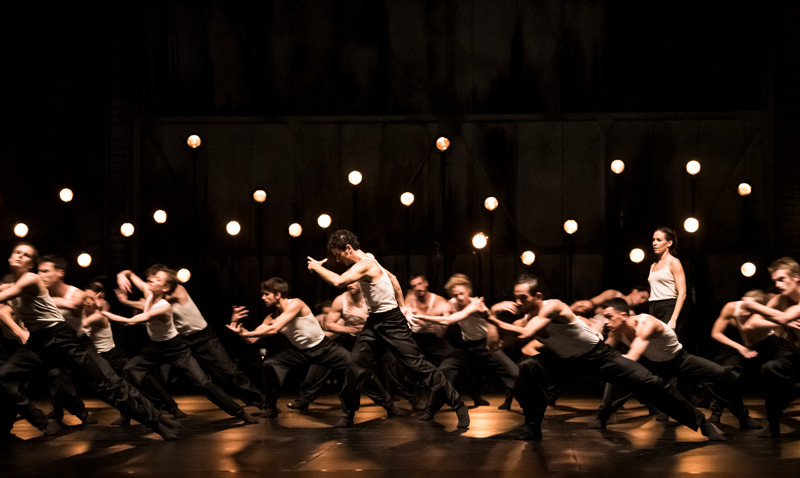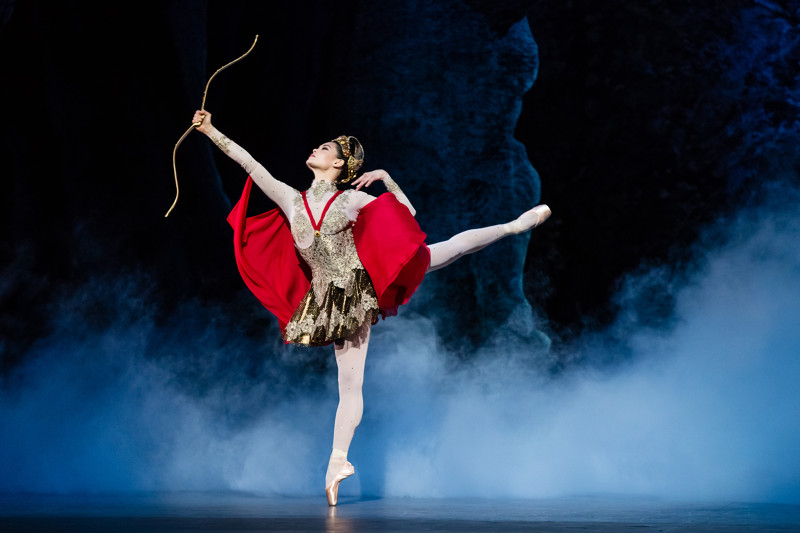Socially Distanced Paris, November 2020 - Vancouver Ballet Society
- Home
- City Reports 2020 - 2023
- Socially Distanced Paris, November 2020

By Marisa C. Hayes
Seven months ago, when “socially distanced pas de deux” had not yet entered the balletomane’s vocabulary, the Paris Opera Ballet was just beginning to emerge from an unprecedented strike. Within weeks, the company’s two opera houses, as well as all theatres across France, were forced to close in response to the novel coronavirus.
Retiring danseuse étoile Eleonora Abbagnato was initially to give her farewell performance in December 2019. It was postponed by the strike and then rescheduled for May 2020, only to be cancelled again. Onscreen, we can savour our favourite étoiles in their prime for all eternity, but offscreen, dance companies are perpetually reconfigured by departures and new arrivals. It’s currently unclear when or even if Abbagnato’s departure will be celebrated.

In June, the internal company auditions held for advanced students of the Paris Opera Ballet School were cancelled, a disappointment for young hopefuls during a year with a high number of openings in the corps de ballet (13 in total). Last year’s graduating class was invited back to the school this autumn to prepare for the rescheduled October audition. Seven women and three men were offered contracts. A second audition to fill the remaining posts — open to international candidates outside the POB’s school — is tentatively planned for January 2021.
Like most cultural institutions, the Paris Opera has organized an ongoing program of streamed performances (accessible only from France) since last spring. Their selection thus far has relied heavily upon recent productions, including Crystal Pite’s quirky second commission for the company, Body and Soul, which premiered at the beginning of the 2019-2020 season. Body and Soul was awarded Best Performance by the French dance critics’ union last summer.
For newcomers, the POB’s streaming archive may be a delight; for regulars, there isn’t enough fresh material. In contrast to most of the ballets featured online, Balanchine’s A Midsummer Night’s Dream was one of the oldest performances (2017) streamed for a limited time in the summer. It features an accomplished cast that pairs the POB’s signature elegance with the choreographer’s demanding athleticism. Christian Lacroix’s updated costumes and set designs provide plenty of lush details to marvel at during repeated viewings.

Additional options are available at the Paris Opera’s digital portal, 3ème Scène (Third Stage), a platform for commissioned dance films launched in 2015. Unfortunately, many of the featured filmmakers seem unfamiliar with the creative possibilities of screendance and opt for clichéd images of Paris, while making little use of the diverse angles and distances the camera affords. The latest example is Pablo Paris Satie. To the melancholy strains of Gnossienne No. 1 (Satie’s composition has been the soundtrack for so many dance films, I’ve now lost count), filmmaker Michel Ocelot captures a jeans-clad Pablo Legasa perched atop the historic Opéra Garnier roof. The premier danseur performs an introspective adagio filmed frontally. The choreography is unremarkable (the website doesn’t credit a choreographer, leading us to assume it is an improvisation), while the film fails to create a dynamic connection between dancer, camera and editing.
A stronger entry at 3ème Scène is Antoine d’Agata’s La vie nue (The Bare Life), a film featuring thermographic still photographs shot during the March lockdown. Set in motion by editing, the images capture empty urban settings in Paris, punctuated occasionally by the thermal signatures of human bodies as they offset the colour palette of architectural stillness. The film questions human interactions in the environment, how and where energy is deployed, and gradually builds up to photographs that document the influx of patients in hospitals during the pandemic’s first wave. As medical staff lean into the body of a patient to assess his internal functions, Julie Lena’s powerful editing illustrates the external dance that facilitates this medical care.
The urban emptiness pictured in d’Agata’s film is a stark reminder of the city’s absent cultural life. Paris’ summer season is normally awash with international guest artists and festivals. This year, the Théâtre de Paris invited Natalia Osipova to Paris for the first time. Dancers from London rarely perform here despite their geographic proximity, and the Royal Ballet’s Russian principal was a highly anticipated guest. Other prominent festivals and events across the country, including the iconic Festival d’Avignon, were all cancelled or postponed.
While the stage lights may have dimmed in France, important changes have been underway behind the scenes. Roselyne Bachelot became France’s new Minister of Culture in July, a nomination that pleased Paris Opera fans due to the politician’s long-standing support of the institution. Although she is best known for her appreciation of the lyric opera department, her new position is a sign of encouragement for the entire institution, currently labouring under the weight of a monumental deficit, as well as the unannounced early departure of outgoing director Stéphane Lissner.
Bachelot has proved to be a powerful advocate for the performing arts in France, arguing in favour of reopening theatres, safety protocols obligatory. In October, the Paris Opera Ballet proposed a series of solos and pas de deux on a reduced stage (the rest is undergoing renovations). Chaillot, the national dance theatre, had just kicked off its season mid-October when a new curfew sent theatres scrambling to adapt. Rising pandemic numbers currently threaten to halt the new season in its tracks. Fortunately, the government has invested generously in the arts, ensuring that theatre employees, artists and even freelancers receive a regular income this year. Compared to the dire situation facing cultural institutions in some countries, French artists and theatres are well provided for.

